BE Griffiths
A prospective cohort study of factors associated with the digital cushion thickness in dairy cattle
Griffiths, BE; Barden, M; Anagnostopoulos, A; Wilson, JP; Lamprou, E; Tulley, W; Bedford, C; Psifidi, A; Banos, G; Oikonomou, G
Authors
M Barden
A Anagnostopoulos
JP Wilson
E Lamprou
W Tulley
C Bedford
A Psifidi
G Banos
G Oikonomou
Abstract
Key factors such as stage of lactation, parity, and body fat reserves have been associated with the digital cushion thickness (DCT), however, there are discrepancies between the results of previously published studies. The objective of this study was to examine the association of stage of lactation, body fat reserves, parity, and lesion incidence with DCT in a large cohort of intensively monitored cows. Across 4 UK farms, 2,352 cows were prospectively enrolled and assessed at 4 time points: before calving (T1-Precalving), immediately after calving (T2-Calving), in early lactation (T3-Early), and in late lactation (T4-Late). At each time point, BCS was recorded, the presence of sole lesions (sole ulcers and sole hemorrhage) and white line lesions was assessed by veterinarians, and an ultrasound image was taken to retrospectively measure the backfat thickness (BFT) in the pelvic region and the digital cushion on the hind left lateral claw. Mixed effects multivariable linear regression models, with the cow as a random effect, were fit to examine the association between the explanatory variables and DCT. The explanatory variables tested were farm, parity, stage of lactation, BCS, BFT, height, the presence of a lesion at the time of measurement, the chronicity of a lesion during early lactation, the predicted maximum daily milk yield, and the rate of milk production rise in early lactation. Stage of lactation and farm were both associated with DCT; however, an interaction was present, and this DCT pattern of change was farm-dependent. Two distinct patterns emerged; one indicated the nadir to occur shortly after calving, the other indicated the nadir to occur during early lactation. Neither BFT nor BCS were significantly associated with DCT. Heifers displayed thinner digital cushions compared with multiparous cows; however, this effect was dependent on the stage of lactation, with heifers having a thinner digital cushion up until late lactation, by which time DCT was commensurate with multiparous animals. Sole lesions and white line lesions at the time of measurement were associated with DCT (sole lesion: estimate = -0.07 mm, 95% CI = -0.14-0.00; white line lesion: estimate = 0.28 mm, 95% CI = 0.15-0.42).
Citation
Griffiths, B., Barden, M., Anagnostopoulos, A., Wilson, J., Lamprou, E., Tulley, W., Bedford, C., Psifidi, A., Banos, G., & Oikonomou, G. (2024). A prospective cohort study of factors associated with the digital cushion thickness in dairy cattle. Journal of Dairy Science, 107(9), 7230-7244. https://doi.org/10.3168/jds.2023-24563
| Journal Article Type | Article |
|---|---|
| Acceptance Date | Apr 8, 2024 |
| Online Publication Date | May 22, 2024 |
| Publication Date | 2024 |
| Deposit Date | Sep 2, 2024 |
| Publicly Available Date | Sep 2, 2024 |
| Journal | Journal of Dairy Science |
| Print ISSN | 0022-0302 |
| Electronic ISSN | 1525-3198 |
| Publisher | Elsevier |
| Peer Reviewed | Peer Reviewed |
| Volume | 107 |
| Issue | 9 |
| Pages | 7230-7244 |
| DOI | https://doi.org/10.3168/jds.2023-24563 |
| Keywords | BCS; backfat thickness; lameness; dairy cattle; digital cushion; BODY CONDITION SCORE; SOFT-TISSUE THICKNESS; SUPPORT STRUCTURES; HOOF LESIONS; SOLE HORN; LAMENESS; CLAW; HEIFERS; EPIDEMIOLOGY; LOCOMOTION |
Files
A Prospective Cohort Study Of Factors Associated With The Digital Cushion Thickness In Dairy Cattle
(1.9 Mb)
PDF
Licence
http://creativecommons.org/licenses/by/4.0/
Publisher Licence URL
http://creativecommons.org/licenses/by/4.0/
Version
VoR
You might also like
Characterisation of phenotypic patterns in equine exercise-associated myopathies
(2024)
Journal Article
Does inbreeding contribute to pregnancy loss in Thoroughbred horses?
(2024)
Journal Article
Downloadable Citations
About RVC Repository
Administrator e-mail: publicationsrepos@rvc.ac.uk
This application uses the following open-source libraries:
SheetJS Community Edition
Apache License Version 2.0 (http://www.apache.org/licenses/)
PDF.js
Apache License Version 2.0 (http://www.apache.org/licenses/)
Font Awesome
SIL OFL 1.1 (http://scripts.sil.org/OFL)
MIT License (http://opensource.org/licenses/mit-license.html)
CC BY 3.0 ( http://creativecommons.org/licenses/by/3.0/)
Powered by Worktribe © 2025
Advanced Search
